The Desolation of America’s Urban Schools
Austerity measures have resulted in dangerous, squalid conditions for the most vulnerable students.
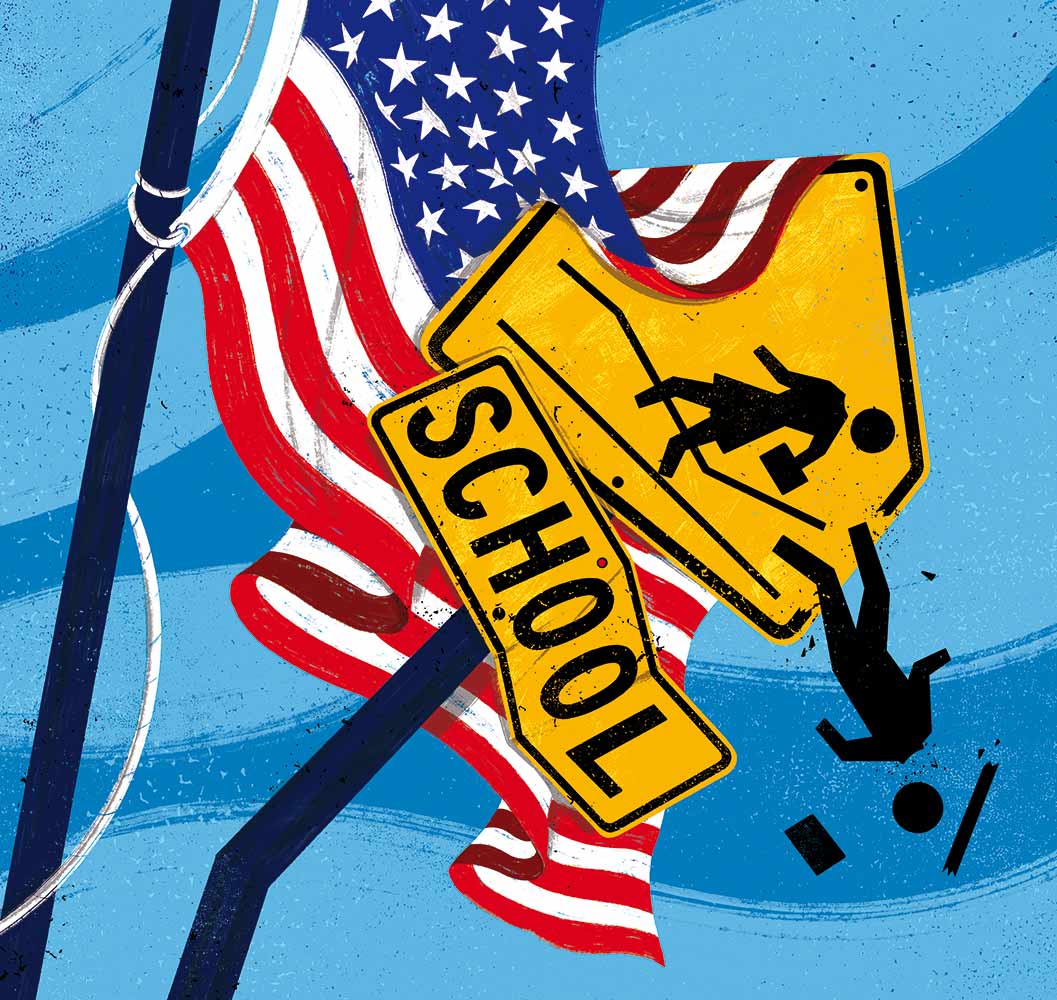
There is an elementary school in Boston’s Dorchester neighborhood that bears the name of Dr. Martin Luther King Jr. It’s an old and tired-looking structure, built in 1937 and originally named for a former school official. In 1965, Dr. King stood on the front steps of the building and spoke through a megaphone to a crowd of parents and religious figures who were leading the charge in the integration struggle. Three years later, after his assassination in April 1968, the school was renamed in his honor.
But ironies abound. In a building that held about 500 students, as the principal told me when I visited the school in 2019, “I think I may have 12 white children.” In academic terms, the school was rated in the bottom 10 percent among public elementary and secondary schools in Massachusetts.
The building had long been in a state of disrepair. There was an ugly water hole in the ceiling of the first of several classrooms that I visited and peeling paint in the gloomy metal stairways. I sat in on an eighth-grade science class (the school included seventh and eighth grades at the time), which took place in an ancient-looking lab that had no lab equipment on the tables. It was a long and narrow room in which the rows of science tables took up so much space that the students in a back row, beside whom I was sitting, could barely hear the teacher and couldn’t see what he was writing on the whiteboard. One of the students, a tall Black girl who was toying with her cell phone, turned to me with a friendly but sardonic smile. She shrugged her shoulders, with her hands spread out, as if to say, “This is what we’re used to.”
According to the website of the Boston Public Schools, the Martin Luther King Jr. school “exemplifies the true meaning of Dr. King’s dream.” I had to wonder if the writer of that statement had spent much time in the classes there.
The school’s poor academic rating came as no surprise to me; the numbers were well-known. It was the sense of physical decay in a building meant to honor Dr. King that lingered in my memory.
But other schools in Boston were in far worse disrepair. Squalid bathrooms—sinks with broken faucets and no hot water, toilets that could not be flushed, and stalls that had no toilet paper—were a common problem. At one school in the old South End of Boston, where 90 percent of the children are Black or Latino, an 11-year-old student told a reporter from The Boston Globe that she avoided going to the bathrooms because they were so vile. She had taught herself a kind of game that she called “the pee dance”—rocking back and forth and lifting up one leg and shaking it—in order to distract herself when she had to urinate. One day, she said, it didn’t work. She had to ask for permission “to go to the nurse’s office for a change of clothes.”
Stinky and disgusting bathrooms are the kinds of ugly details that tell the children in these schools just how little their sense of self-respect is valued. Sometimes when I’m visiting a school, if I need a restroom break, I’ll tell the official who’s escorting me that I’ll use a restroom that we’re passing in the hall. “Oh, no!” I’m told. “You don’t want to go in there. We have a nicer bathroom in the office for our visitors.” If a hallway bathroom would offend a grown-up visitor, why would it not be offensive to a child?
Teachers in cities in other parts of the country tell me of schools that have no functional cooling systems and sometimes have to send their students home on very hot and humid days. In some of the same districts where construction and repair have been deferred for decades, the heating systems have broken down in the cold of winter. In Baltimore, CBS News reported, “teachers posted photos of children bundled up in freezing rooms,” wearing coats and gloves, when the boiler systems failed. “It’s unbearable. There are icicles in the classroom. The cold water jug is frozen…. It’s inhumane,” the mother of one of the children said.
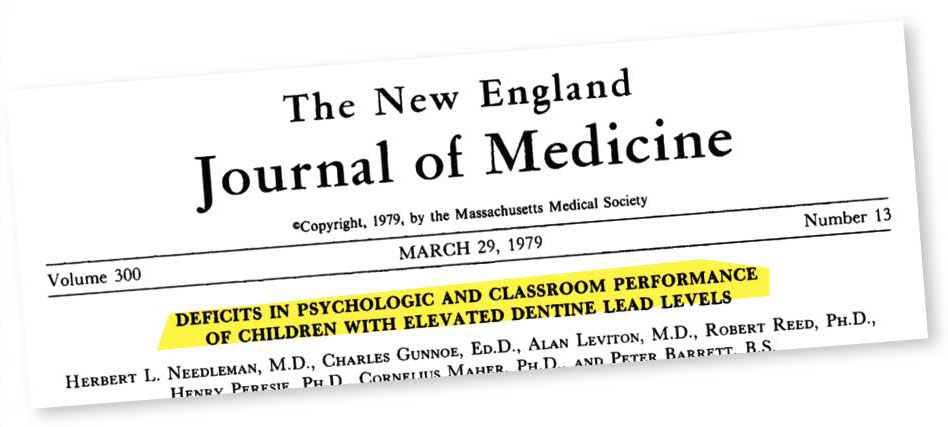
In a column for The Washington Post in 2018, the journalist Rachel Cohen noted that public schools in the United States were, on average, 45 years old—and in former industrial cities, usually much older. “The last time Congress debated school infrastructure spending was in 2009,” Cohen wrote, when school construction funds were initially included in President Obama’s “stimulus deal.” But the line item was subtracted from the deal when the president found himself unable to win even minimal Republican support. Over a decade later, the infrastructure bill passed by Congress in November 2021 still did not include funding for schools. And President Biden’s ill-fated Build Back Better bill, although it did originally include funding to build new schools and modernize old ones, was taken off the table when congressional conservatives rejected it. By the fall of 2022, the average age of a public school had risen to nearly 50 years.
An alarming number of those older schools are not merely unattractive and demoralizing places with heating and cooling problems. They also tend to be plagued with lead-based paint that crumbles from the walls and ceilings. The adverse effects of inhaling or chewing chips of lead-based paint on a child’s cerebral development are usually irreversible. As long ago as 1979, an extensive study at the Harvard Medical School warned us of the impact of even low levels of lead exposure on a child’s cognitive abilities, and since the early 1990s, more than 6,000 studies have reinforced those findings. But in spite of the compelling medical literature that delineates those dangers, lead infestation continues unabated in all too many schools.
A study of environmental hazards in the District of Columbia, released by the National Academy of Medicine in 2017, examined the extent of lead-paint exposure and its effects on children in the district and elsewhere in the nation. The study noted that federal legislation enacted in 2008 “made the presence of lead-based paint…illegal in all residential dwellings…and in child-occupied facilities…built before 1978.” (The average public school, as noted above, was built before that date.) But enforcement of the law, as parents seldom learn until it’s far too late, has often been impeded or resisted at the state and local levels, and no federal regulations compel states to test for lead in public schools or even to get rid of it if it’s present at high levels. In 2014, six years after the toothless legislation’s passage, the nonprofit Lead Safe America Foundation found that lead hazards in the nation’s public schools were still “pretty universal” in the older urban neighborhoods that it surveyed.
In the same communities, there is also a high likelihood that children live in deteriorated and lead-infested housing. The combined effect of these factors—unsafe schools, unsafe housing—has historically taken its highest toll on young children of color, according to the Centers for Disease Control, other government agencies, and various independent sources. “Most of the families at risk for lead poisoning each year,” as Healthline noted in 2022, are “Black families.” The healthcare publication put the matter bluntly: “An increased prevalence of lead poisoning in Black communities, especially in Black children, is an unequivocal example of environmental racism.”
The dangers, moreover, are present not only in the chips of lead that crumble from the walls and ceilings and that children often breathe or chew, but also in the water they drink, because of lead and other toxins either in the water sources or in the archaic lead or copper piping in the plumbing system. In some cities, the exposure of children to lead-paint poisoning has not been addressed until a child or a group of children becomes sick enough to end up in the hospital.
In a powerful series titled “Toxic City,” published in 2018, The Philadelphia Inquirer described a scenario of “filthy schools and unsafe conditions,” “acres of flaking and peeling paint likely containing lead,” and “dangerously high levels of cancer-causing asbestos fibers” from “crumbling pipe insulation,” deteriorated ceilings, and broken tiles in the floor. Despite its awareness of these perils, the school district “downplays them to [the children’s] parents,” the paper reported. At one elementary school, where “paint chips fluttered from the ceiling of a first grade classroom” and landed on a child’s desk, the 6-year-old, who was afraid to get up from his chair and throw the paint chips in the trash, “put them in his mouth [and] swallowed them.”
It wasn’t long before the effects on this student’s behavior became obvious. His teacher started to assign him to what was called the “red zone”—an ominous term, a shaming code—because he was talking out of turn or becoming too restless to stay still in his chair. Within a month, his parents said, he was having “mood swings. Frequent stomachaches. Inability to finish sentences. Overwhelming sadness.” Within another month, he was in the hospital. “The level of lead in [his] blood,” the paper noted, “was…nine times higher than the level at which doctors worry about permanent damage to the brain.”
Shaming or otherwise penalizing children for the damage we have done to them is, sad to say, not a new phenomenon. During the civil rights campaigns in Boston in the late 1960s, one of my mentors, the psychologist William Ryan, coined the term “blaming the victim” to describe the way that people of color were held to account for their social disadvantages and suffering. He later used the phrase as the title of the enduringly important book he published in 1971. Putting a child in a shaming zone in order to control the behavioral consequences of the toxic setting in which we’ve placed that child is a telling example of blaming the victim for the sins of our society.
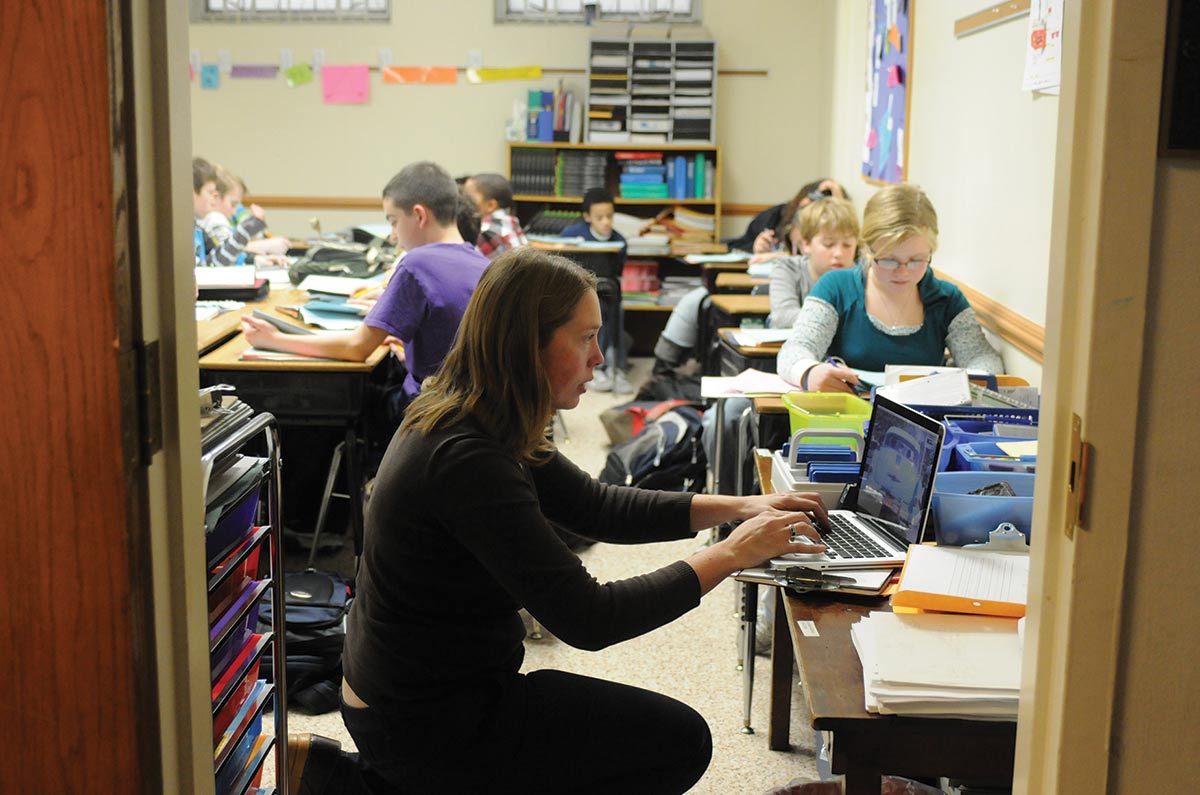
When state and city leaders tell parents in poor neighborhoods that they empathize with their concerns about the presence of lead and other toxins as well as other dangers in their children’s schools, but say they cannot act on those concerns for now, they typically claim that their hands are tied because of fiscal shortages. And sometimes, this is obviously true. When the local economy goes into a sudden steep decline, cities are forced to put off renovations for a period of time and also cut back on routine funding for their schools. When the economy recovers, parents are told, the needed funds will be restored.
Popular
“swipe left below to view more authors”Swipe →It seldom works that way, however. As we know all too well, once “austerity budgets” have been put in place, they usually remain in place long after any point at which they can be reasonably justified. In the 1970s, for example, there was a major national recession. In New York City, an emergency plan was put into effect that called for steep reductions in funding for the schools. But as late as 1999, when the economy was booming and newly minted millionaires and billionaires were being celebrated in the social pages of the local press, I was walking into public schools in some of the poorest sections of the Bronx that were every bit as desolate as they’d been when I first described those schools in Savage Inequalities almost 10 years before.
There was no shortage of money in New York City at this time. These were the years when trendy clubs and restaurants and new boutique hotels and elegant stores with famous names were thriving in Manhattan. Developers like Donald Trump were erecting glitzy tributes to themselves and to the fortunes they’d accrued, while children in the schools that I was visiting were being written off as if they were the outcasts of the city’s social order.
The pattern repeats itself in other states and cities as economic crises come and go. In the wake of the recession of 2007–09, funding for the construction and repair of public schools was cut back once again. Over subsequent years, those funding cuts tended to be only partially and grudgingly restored—and additional cuts would continue to be made from one year to the next, no matter what the state of the economy. When Covid struck in 2020, the prolonged postponement of construction and repair—and the lack of functional ventilation in the nation’s older schools—added to the crisis faced by cities as they struggled to make buildings safe enough for children to return.
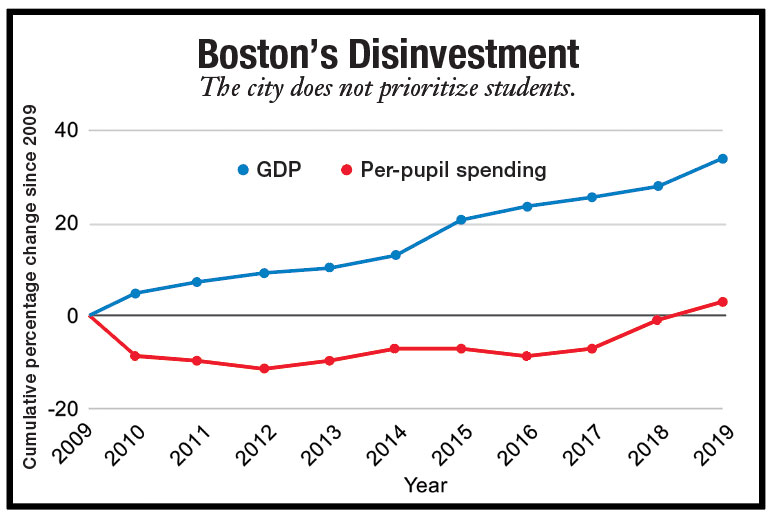
In the perennially underfunded public schools of Boston—more than half of which were built 80 or more years ago—the last significant round of school construction took place in the 1960s and ‘70s. In 2013, when the earnest-seeming mayor-to-be Marty Walsh was running for election, he made a campaign pledge to allocate $1 billion for major school renovation and construction. Three years later, his promise unfulfilled, he made the pledge again. As commonly happens in these cases of foot-dragging, he turned to outside consultants to come up with “recommendations” for financial planning and funding to make possible the necessary repairs or new construction—recommendations that would then be submitted to him and to members of the school department for further planning and decision-making. The proposal, when it was finally released, allowed the city 10 more years for the renovation or construction of a dozen schools, which would, of course, be of no benefit to any children who started their kindergarten year when Walsh began to make these promises.
The ritual of turning to consultants or a commission to look into the problem of insufficient funding, instead of coughing up the money to eradicate the problem, is an old and practiced exercise on the part of politicians who, predictably, do not see it in their interest to exact the needed revenue by raising taxes on their corporate donors and wealthiest contributors. Poor people, especially in minority communities, almost never have the power to alter these priorities.
But denying children the right to go to school in civilized surroundings is not the only way in which starvation funding has been soiling the young mentalities of children and limiting the horizons of their learning. Funding cuts have also led to repeated reductions in the teaching force—fewer teachers, larger classes—including the laying off of art and music teachers as well as school librarians.
The loss of school librarians and libraries has been widely noted in media accounts of educators and in government surveys. In New York City, the number of school librarians declined from nearly 1,500 in 2005 to 450 in 2022, leading to a ratio of approximately one librarian to more than 2,000 students. In Los Angeles, also in 2022, there was one school librarian for approximately 3,300 students. In Boston, there was one school librarian for 3,500 students—compared with one for about 600 in suburban Newton and one for about 300 in Cambridge. In Chicago, only 10 percent of schools in which Black children make up the largest proportion of the student population still have school librarians, according to a lengthy piece of disturbing reportage by the Chicago Sun-Times in 2022.
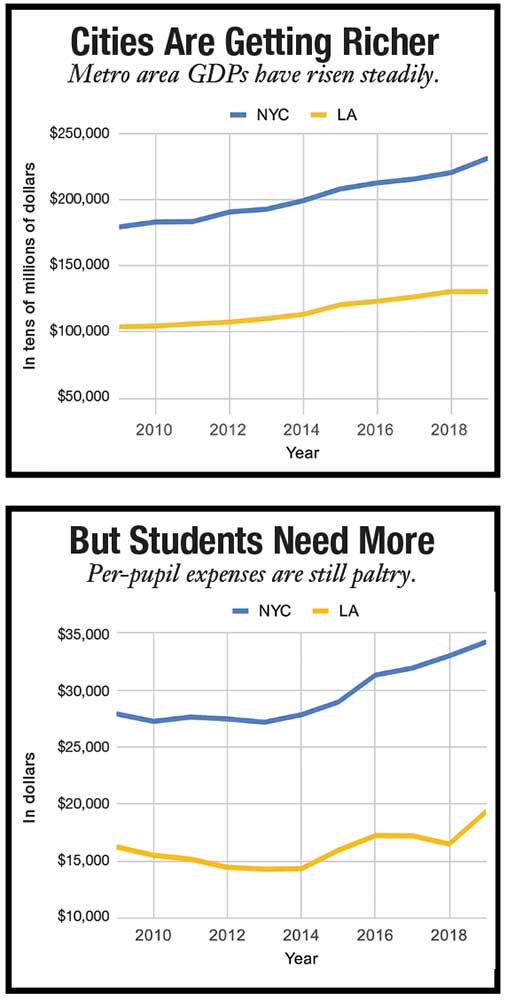
Affluent and primarily white suburban districts can, if they wish, compensate for the lack of state and federal funds by raising money privately or by issuing a bond for a specific purpose, or by voting to increase the levy on their homes and properties and using these funds, for example, to put up a new addition to an overcrowded school to create more classroom space. They can also build a beautiful library and hire a librarian—or, depending on their children’s needs, can hire school psychologists and counselors for the elementary grades. Adding these resources and limiting class size can help to reduce the pressure placed on teachers to take on the role of classroom cop and try to contain all the lively energy that healthy children tend to bring with them to school.
In chronically underfunded inner-city schools, by contrast, overburdened teachers are too often under constant pressure to suppress the liveliness of children, to keep them silent and immobile in their chairs, and to rigidify their interactions with them. Austerity in funding, for these reasons, has increasingly led to austerity in pedagogic practices and an unhappy desiccation of the personalities of teachers, who are frequently obliged to undergo training in order to develop an unnaturally autocratic presence in the classroom.
A case in point: A teacher in low-income Lawrence, Mass.—where children of color, many of them from Dominican and Puerto Rican families, make up 96 percent of public school enrollment—was told by an observer from a teacher-training corporation, who was sitting with two other trainers in the back row of her sixth-grade classroom, that she was smiling too much at her students (“I came across as too happy,” she was told) and wasn’t standing stiff enough or straight enough while she was talking to them. According to the teacher, whose story got some brief attention in 2015 when it was cited by Valerie Strauss in her education blog in The Washington Post, “I was told to stand in ‘mountain pose’ and not to favor one leg over another. I was told not to cross my legs. My body language must be in no way casual.” She was also told that her tone of voice conveyed too much enthusiasm and that she was giving children too much praise when they did a lesson right or behaved correctly.
The teacher-training experts were speaking to the teacher through an earpiece that she had to wear and which, she said, the children noticed and found perplexing. “Miss,” a student asked her, “what’s that in your ear?” When another student spoke up out of turn, the teacher was told through her earpiece, “Give him a warning.” When the boy kept talking, “Tell him he has a detention.”
At that point, she said, “the boy stood up and pointed to…the three classroom ‘coaches’ huddled around a walkie-talkie. ‘Miss,’ he said, ‘don’t listen to them! You be you. Talk to me! I’m a person! Be a person, Miss. Be you!’ I thought that boy deserved a prize, instead of a detention.”
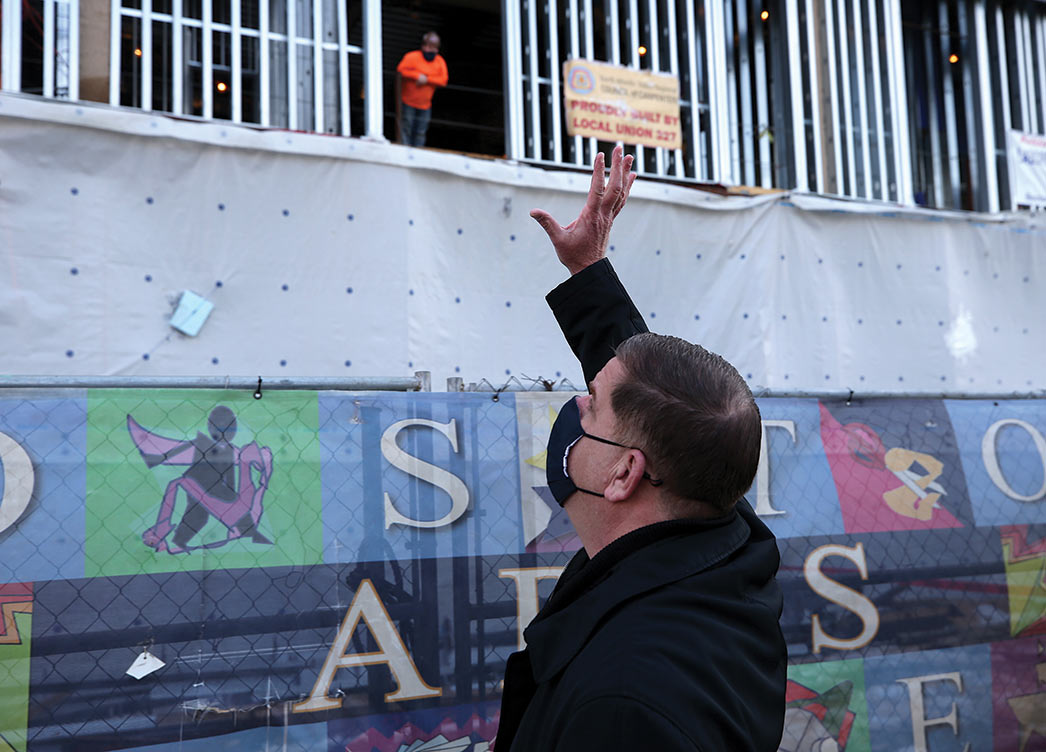
Giving a warning or detention to a precocious and perceptive sixth-grade child who refuses to suppress his independent spirit is hardly the worst of penalties that children have to face in the brave new world of coercive uniformity. Some of the more draconian protocols for punishing a child when milder approaches will not do the job include the use of lockdown rooms—for example, in a hallway closet (I saw one of these closets in a Boston school, where it was called “the calm-down room”)—or wooden paddles to inflict physical pain, a brutal practice still permitted in nearly half the states and not prohibited by the Eighth Amendment’s “cruel and unusual punishment” clause, according to a Supreme Court ruling written by Justice Lewis Powell in 1977 that has never been reversed. In recent years, we have also seen an increase in the unconscionable practice of turning to police to detain and haul away a misbehaving child as young as in the first or second grade—an early introduction to the school-to-prison pipeline. As in the case of exposure to lead poison, the racial disparities have, once again, been clearly documented. Young Black girls, a study by the Georgetown Law Center on Poverty and Inequality found, are 3.6 times more likely to be arrested in their schools than white girls of the same age.
Question: How much money are we actually saving by relying on the intervention of police instead of hiring a few more wise and caring people to help ease a child through a time of inner turbulence that may briefly interrupt the pace of class instruction? But spending the money for those wise and caring people—an empathetic counselor or a full-time school psychologist—has been too frequently regarded as an overly indulgent, soft, and needless luxury that, in any case, the district can’t afford.
It remains to be said that austerity in education funding also takes its toll on the children of our least empowered families long before they are old enough to enter public school. The adamant refusal of our national leaders to deliver on the promise of universal preschool—a promise made for decades by Democratic presidential candidates in their electoral campaigns—is yet another instance of the price that has been paid by children for the myth of scarcity. More than 1 million eligible children are still unable to receive the benefits of the federal Head Start program. Similar programs funded by the states or local districts, with some notable exceptions, continue to be a scattershot approach. Too many children are still locked out, while privileged families often spend as much as $30,000 or $40,000 yearly to buy their children a golden ticket that sets them on the path to advanced and gifted classes in their elementary schools. Those who have been walled off from this opportunity have almost inevitably been robbed of any reasonable chance of competing with the children of the affluent on a level playing field. How much longer will it be until advocates for elemental justice in the treatment of our children can find the means and summon up the strength in numbers to battle back against the myth of scarcity?
The myth, as it persists in this über-rich society, is one of those colossal lies that a wildly unequal social order tells its youngest and most vulnerable children. Nearly 60 years ago, when I was writing my first book on race and education, a politically sympathetic friend in Cambridge showed me a translation of a poem by Yevgeny Yevtushenko. “Telling lies to the young is wrong,” the poet wrote. “Proving to them that lies are true is wrong…. / Forgive no error you recognize, / it will repeat itself, increase, / and afterwards our pupils will not forgive in us what we forgave.”
The poem was written in 1952. We are still telling lies to children. I am afraid they will come back to haunt us.
Disobey authoritarians, support The Nation
Over the past year you’ve read Nation writers like Elie Mystal, Kaveh Akbar, John Nichols, Joan Walsh, Bryce Covert, Dave Zirin, Jeet Heer, Michael T. Klare, Katha Pollitt, Amy Littlefield, Gregg Gonsalves, and Sasha Abramsky take on the Trump family’s corruption, set the record straight about Robert F. Kennedy Jr.’s catastrophic Make America Healthy Again movement, survey the fallout and human cost of the DOGE wrecking ball, anticipate the Supreme Court’s dangerous antidemocratic rulings, and amplify successful tactics of resistance on the streets and in Congress.
We publish these stories because when members of our communities are being abducted, household debt is climbing, and AI data centers are causing water and electricity shortages, we have a duty as journalists to do all we can to inform the public.
In 2026, our aim is to do more than ever before—but we need your support to make that happen.
Through December 31, a generous donor will match all donations up to $75,000. That means that your contribution will be doubled, dollar for dollar. If we hit the full match, we’ll be starting 2026 with $150,000 to invest in the stories that impact real people’s lives—the kinds of stories that billionaire-owned, corporate-backed outlets aren’t covering.
With your support, our team will publish major stories that the president and his allies won’t want you to read. We’ll cover the emerging military-tech industrial complex and matters of war, peace, and surveillance, as well as the affordability crisis, hunger, housing, healthcare, the environment, attacks on reproductive rights, and much more. At the same time, we’ll imagine alternatives to Trumpian rule and uplift efforts to create a better world, here and now.
While your gift has twice the impact, I’m asking you to support The Nation with a donation today. You’ll empower the journalists, editors, and fact-checkers best equipped to hold this authoritarian administration to account.
I hope you won’t miss this moment—donate to The Nation today.
Onward,
Katrina vanden Heuvel
Editor and publisher, The Nation
More from The Nation
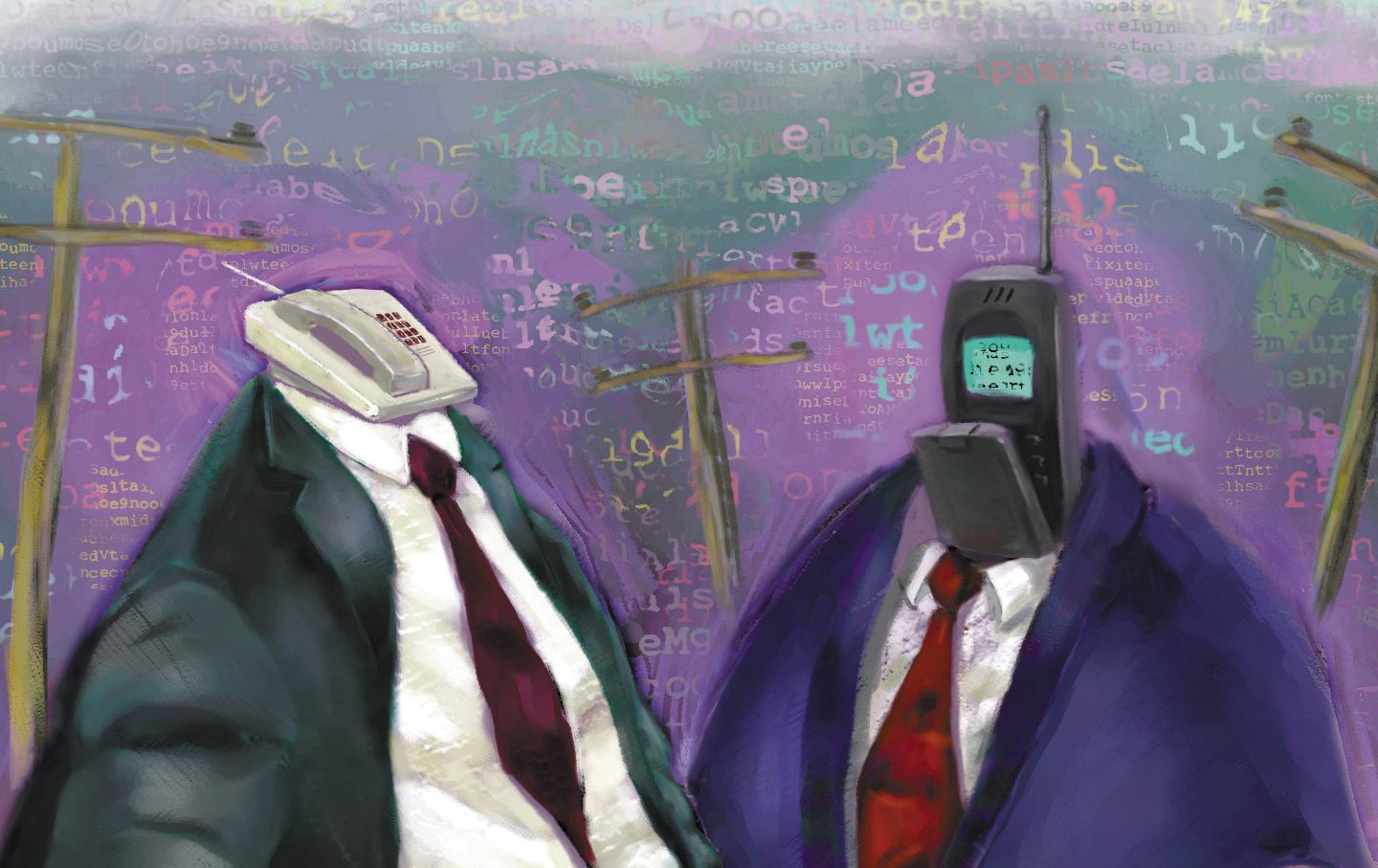
My Dumb Journey Through a Smartphone World My Dumb Journey Through a Smartphone World
I spent six months with a flip phone. I learned that a more conscious technological future will require much more than just unplugging.
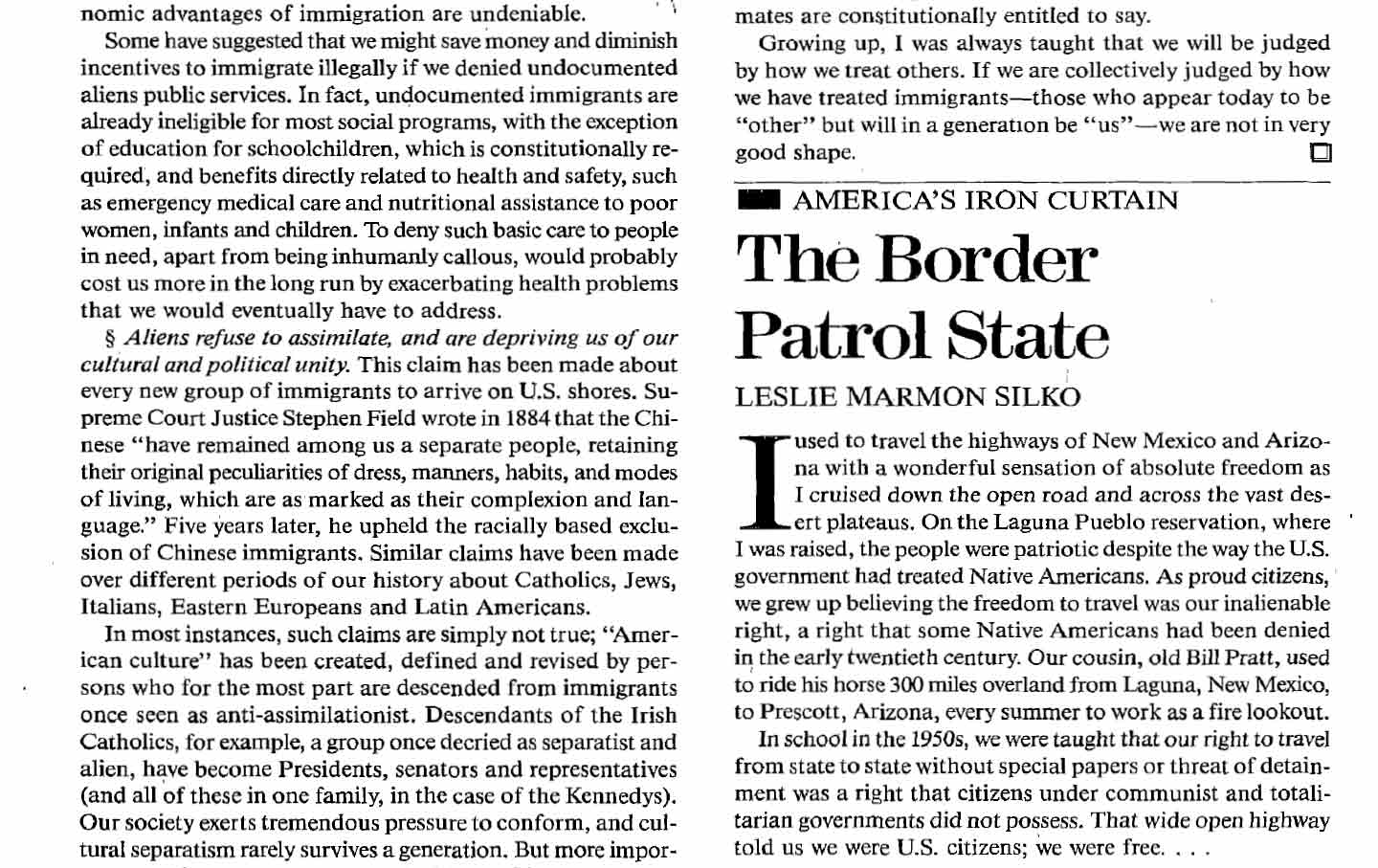
How the Border Patrol Moved Inland—and Created a Police State How the Border Patrol Moved Inland—and Created a Police State
In 1994, the writer Leslie Marmon Silko wrote a piece for The Nation warning of a frightening new immigration regime.

Why Epstein’s Links to the CIA Are So Important Why Epstein’s Links to the CIA Are So Important
We won’t know the full truth about his crimes until the extent of his ties to US intelligence are clear.

The Public Health Heroes of 2025 The Public Health Heroes of 2025
The Trump administration wants to destroy our health infrastructure. These warriors aren't letting that happen without a fight.

Rob Reiner, Bari Weiss, and the Shifting Politics of Hollywood Rob Reiner, Bari Weiss, and the Shifting Politics of Hollywood
Weiss’s ascent reveals the extent to which Hollywood, once a Democratic stronghold, has defected for a politics that puts the concerns and egos of wealthy people first.
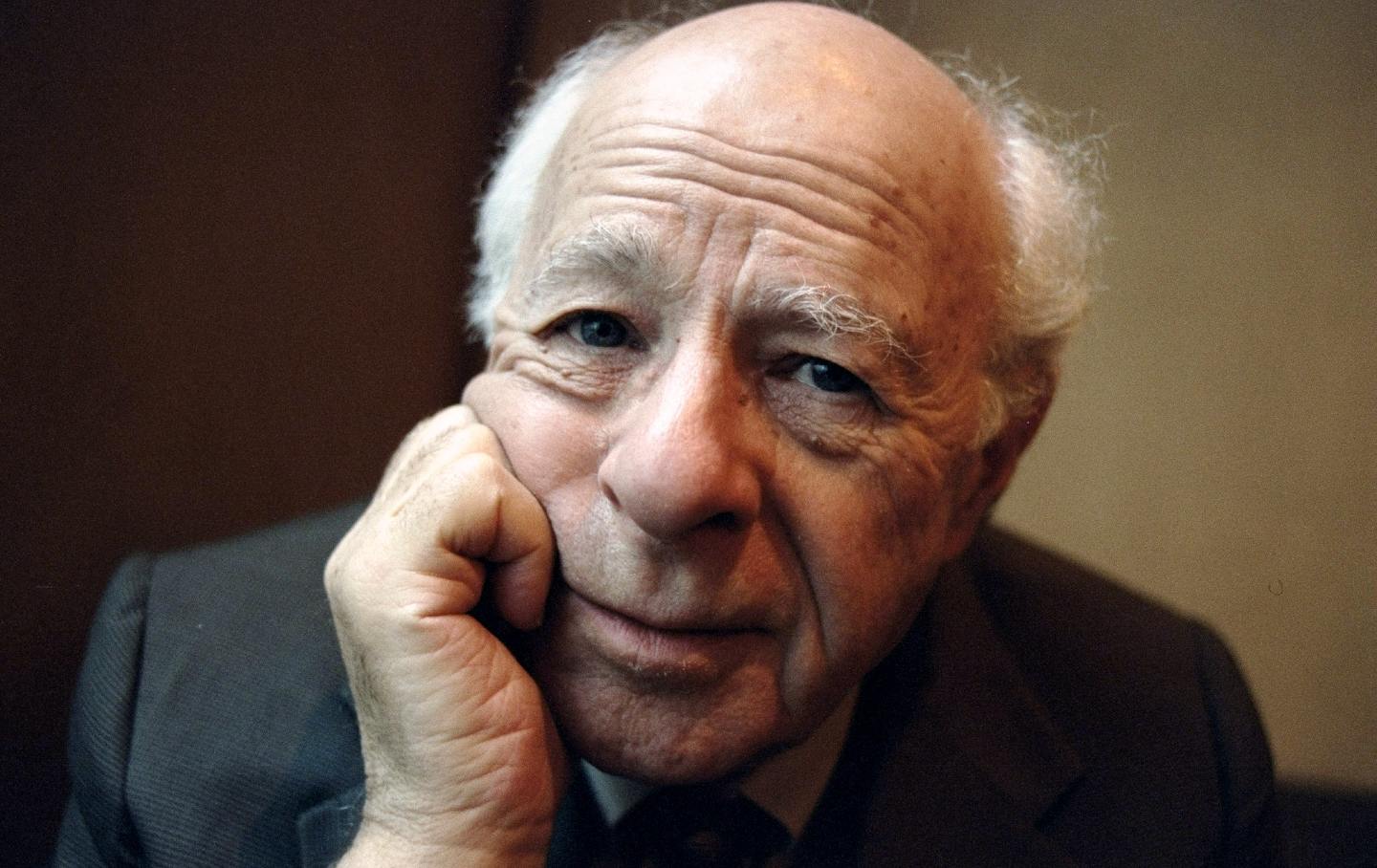
The Longest Journey Is Over The Longest Journey Is Over
With the death of Norman Podhoretz at 95, the transition from New York’s intellectual golden age to the age of grievance and provocation is complete.


